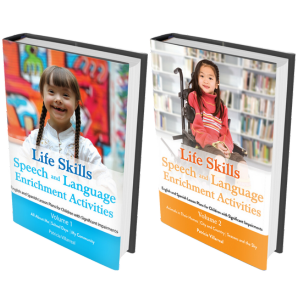Implications of Poverty in Speech Therapy
This blog post is a summary of a presentation (Implications of Poverty in Texas and Effective Strategies for Children) to be given at the Texas (TSHA) Convention on February 28, 2014

This is why thinking about poverty in speech therapy is important to me. This, really, is an important topic for all speech-language pathologists. We have the chance to work with children who would not otherwise have the communication supports they need. We get to work alongside families to understand their daily needs (notice I did not use the word wants).
We can show them that their worth is more than the money coming into their home.
Click here to get ASHA approved continuing education for watching this.
First, we need to know the facts.
- To be considered “officially poor,” a family of four makes no more than $23,681 annually.
- 1 out of 4 Texas children live in poverty. That’s a 24% increase since 2000.
Let’s get the facts on education.
- Texas has the HIGHEST percentages of children not read to regularly– 1 of every 4 kids are NOT read to at least three nights per week.
- The US percentage is 16%.By age 5, the child of a professional family has heard 45 million words spoken as opposed to the 13 million words heard by a child in poverty (Hart and Risley, 1995).
- Children in poverty hear 75% fewer encouragements than children from a professional family. (Hart and Risley, 1995).
The following ideas are from Eric Jensen’s Teaching with Poverty in Mind. I love this book, and the strategies work. Here are a few highlights that can be applied to poverty in speech therapy:
Social & Behavioral Strategies
- Create a positive environment.
- Share the decision making and give the students a choice.
- Teach basic meet and greet skills.
- Be inclusive. Use words like “our” and not “me-and-you” model that reinforces a power hierarchy.
- Thank and praise students for even the smallest accomplishments and effort every time you see them.
- Work on problem solving skills in the classroom
Therapy Strategies
- Be very specific in the steps needed to do something.
- Children may not be exposed to technology at home. Use technology in your therapy session.
- Make lessons about things students know about.
- Share goals and objectives with the student so they know where they are and where you are trying to go.
Parent Involvement
- Give information about free, local medical and dental services, as well as information about nearby locations where food and shelter are available at minimal-to-no cost (ASHA Leader, 2001).
- In families where the caretakers are illiterate, wordless books can be sent home so adults and children can discuss them together. (O’Hanlon, & Roseberry-McKibbin, 2004).
- Motivate parents to observe in the classroom and in treatment sessions. Tell them about the local library.
In the course: Effective Educational Strategies That Take Poverty into Consideration I share my story and Texas’ story. I look forward to working with you to help make things better for our students.
References:





I have worked with students in poverty for many years. Reading this article in 2018, 4 years after the presentation was published, I found the tip about using technology in therapy because students may not have it at home to be perhaps already outdated for some children. I have had a few students recently who are from extreme poverty, and literally the *only* toy in the home has been a tablet. I am not sure how the tablets were obtained, but parents were very proud that their child had access to several games and of course, videos via the tablet. What these children lacked were true toys or the imagination skills that come with turning other objects into toys. We actually had to teach play skills and how to use toys or other objects playfully.
Hi Melanie,
Thank you for your insight and feedback. I agree–plays skills are essential. In terms of access to technology, there are families with and without the means to obtain the items. At this time in 2018, a Digital Divide (e.g., access to internet, computer) continues to exist between socio-economic levels. As for families from low-income communities, effective and supportive strategies include our skills in the arena of speech and language and knowledge related to (but is not limited to): understanding and acknowledging daily exposure to stressors, valuing the child and family’s narratives, and building rapport and relationships (to get to the head, you go through the heart). The research and work of Dr. Jeffrey Duncan-Andrade is instrumental and worth a read. We are lucky to be a part of their communication journey, and great strides are made with our SLP knowledge and human compassion. Thank you for the contributions that you’ve given to our field, Melanie.